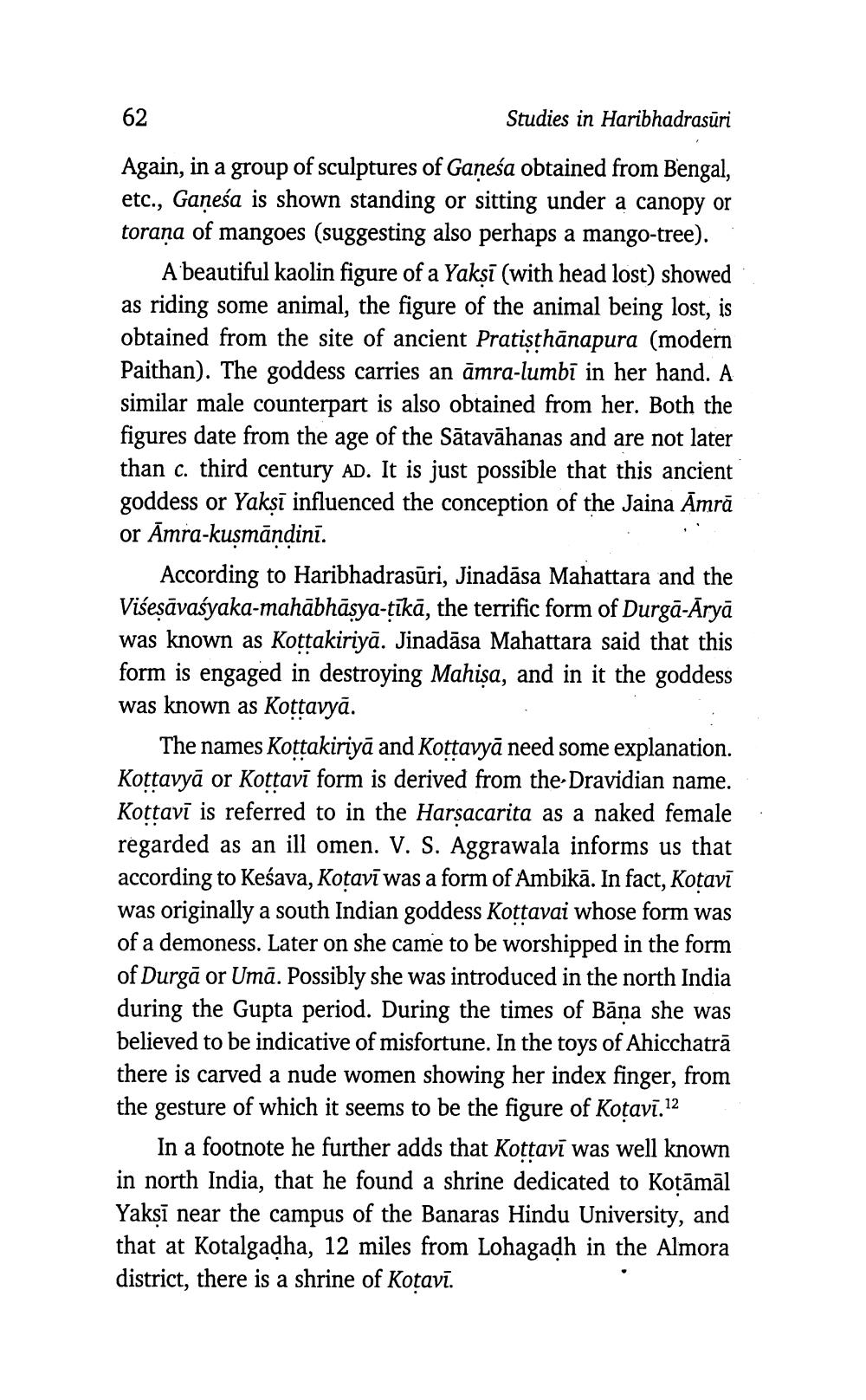________________
62
Studies in Haribhadrasūri Again, in a group of sculptures of Ganeśa obtained from Bengal, etc., Gaņeśa is shown standing or sitting under a canopy or toraņa of mangoes (suggesting also perhaps a mango-tree).
A beautiful kaolin figure of a Yakṣī (with head lost) showed as riding some animal, the figure of the animal being lost, is obtained from the site of ancient Pratisthānapura (modern Paithan). The goddess carries an āmra-lumbī in her hand. A similar male counterpart is also obtained from her. Both the figures date from the age of the Sātavāhanas and are not later than c. third century AD. It is just possible that this ancient goddess or Yakṣī influenced the conception of the Jaina Amrā or Āmra-kuşmāndini.
According to Haribhadrasūri, Jinadāsa Mahattara and the Viśeşāvašyaka-mahābhāsya-tīkā, the terrific form of Durgā-Āryā was known as Kottakiriyā. Jinadāsa Mahattara said that this form is engaged in destroying Mahisa, and in it the goddess was known as Kottavyā.
The names Kottakiriyā and Kottavyā need some explanation. Kottavyā or Kottavi form is derived from the Dravidian name. Kottavī is referred to in the Harsacarita as a naked female regarded as an ill omen. V. S. Aggrawala informs us that according to Keśava, Kotavī was a form of Ambikā. In fact, Kotavī was originally a south Indian goddess Kottavai whose form was of a demoness. Later on she came to be worshipped in the form of Durgā or Umā. Possibly she was introduced in the north India during the Gupta period. During the times of Bāna she was believed to be indicative of misfortune. In the toys of Ahicchatrā there is carved a nude women showing her index finger, from the gesture of which it seems to be the figure of Koțavī. 12
In a footnote he further adds that Kottavī was well known in north India, that he found a shrine dedicated to Koţāmāl Yakṣī near the campus of the Banaras Hindu University, and that at Kotalgadha, 12 miles from Lohagadh in the Almora district, there is a shrine of Koțavī.




